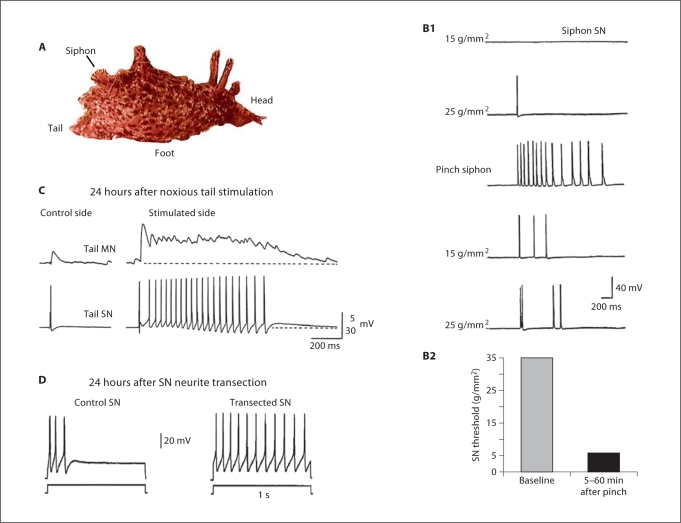Fig. 2.
Sensorin-expressing neurons in Aplysia are ‘true’ nociceptors and exhibit long-term nociceptive sensitization. A Body regions innervated by different sensory clusters. Sensory neurons innervating the siphon (LE cluster) and tail (VC cluster) have received the most study. B Evidence that mechanosensory neurons are nociceptors. Responses of an LE siphon sensory neuron (SN) to mechanical stimulation (B1) exhibit a relatively high threshold, are maximal with damaging stimuli (pinch), and increase (sensitize) following the pinch (B1 and B2) [modified from Illich and Walters, 1997]. C Long-term, sensitizing effects in a nociceptive tail sensory neuron. One day after noxious tail shock a SN innervating the shocked site, but not a contralateral control SN, exhibited afterdischarge following a brief (10-msec) test pulse to the soma, and pronounced facilitation of its synapse onto a tail motor neuron (MN) [modified from Walters, 1987b]. D Intrinsic injury signals are sufficient to produce SN hyperexcitability. Example showing how the spike accommodation normally seen in control SNs is greatly reduced in a dissociated SN one day after transection of its neurites [modified from Ambron et al., 1996].

